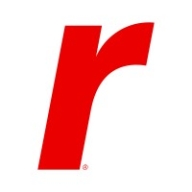

Rackspace OpenStack and FlexPod XCS are competing in the cloud infrastructure category. Rackspace OpenStack has the upper hand in scalability and flexibility due to its open-source nature, while FlexPod XCS shines in performance and integration through its pre-engineered solutions.
Features: Rackspace OpenStack offers an open-source architecture with a high degree of customization options, making it ideal for those needing extensive control over their cloud environments. It supports scalability and seamless integration with various third-party tools, enhancing cloud deployment flexibility. FlexPod XCS provides integrated infrastructure utilizing Cisco and NetApp technologies, ensuring performance optimization and reliability. Its design enables simplified deployment and excellent scalability, supporting robust performance for high-demand workloads.
Room for Improvement: Rackspace OpenStack could improve by simplifying its deployment process and enhancing user interface usability for less tech-savvy users. Supporting more out-of-the-box integrations with popular enterprise applications could also increase its attractiveness. Additionally, offering better documentation and educational resources might help users maximize the platform's capabilities. FlexPod XCS might benefit from more competitive pricing models to reach a broader audience. Its hardware dependence may limit customization options, suggesting potential enhancements towards software-defined configurations. Furthermore, expanding its integration capabilities with non-Cisco or NetApp solutions could also add value for diverse IT environments.
Ease of Deployment and Customer Service: Rackspace OpenStack requires a more intricate deployment process due to its customization options; however, it excels in offering tailored customer support that helps users address specific needs. FlexPod XCS boasts a simpler deployment process due to its pre-integrated design, reducing the time and complexity involved in setup. Its customer service benefits from industry partnerships, providing a robust support network.
Pricing and ROI: Rackspace OpenStack typically features lower upfront costs owing to its open-source nature, presenting a favorable ROI for businesses capable of managing in-house solutions. On the other hand, FlexPod XCS demands a higher initial investment due to its engineered infrastructure but potentially offers better ROI over time by minimizing operational complexities and maximizing efficiency. Businesses should weigh the cost savings of OpenStack's flexibility against FlexPod's reduced management overhead and enhanced productivity.
| Product | Market Share (%) |
|---|---|
| FlexPod XCS | 10.3% |
| Rackspace OpenStack | 4.5% |
| Other | 85.2% |


| Company Size | Count |
|---|---|
| Small Business | 34 |
| Midsize Enterprise | 66 |
| Large Enterprise | 182 |
| Company Size | Count |
|---|---|
| Small Business | 7 |
| Midsize Enterprise | 3 |
| Large Enterprise | 3 |
FlexPod XCS is the secure platform your applications need from edge to cloud. Easily manage your suite of cloud-native, edge, and enterprise apps. Integrate advanced cloud services without compromising performance, security, reliability, or scale.
We monitor all Converged Infrastructure reviews to prevent fraudulent reviews and keep review quality high. We do not post reviews by company employees or direct competitors. We validate each review for authenticity via cross-reference with LinkedIn, and personal follow-up with the reviewer when necessary.